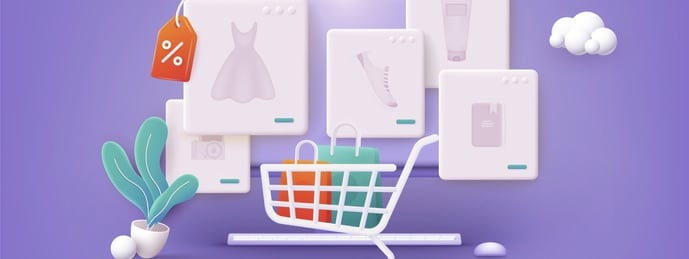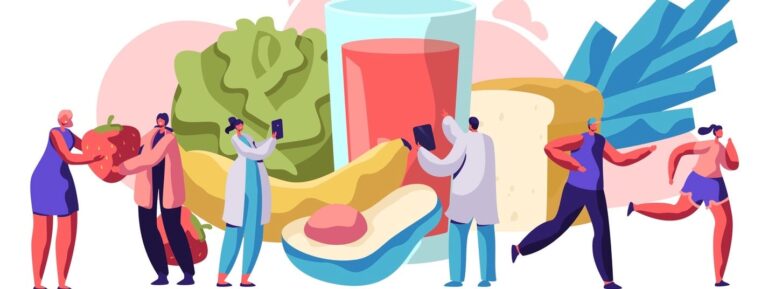In the ever-evolving landscape of e-commerce marketing, the profitability of a brand often hinges on the data-driven decisions made by marketers. Consumer behaviors are constantly shifting and with Google being the latest browser to eliminate third-party cookies, marketing pros are feeling the pressure to adapt to an identity-based ecosystem. And the truth is, even the “right” data can be overwhelming to decipher and take action on. Let’s dive into five key metrics marketers should be leveraging to not just increase sales, but profitability.
1. Repurchase rate: Understanding customer loyalty
You may be thinking, “Shouldn’t we be starting with customer acquisition cost?” While that is an important piece to the puzzle, businesses often focus too heavily on just acquiring new customers versus learning how to retain them. The reality is, your chances of profitability increase exponentially when focusing on your existing customers—specifically your high value ones—and they will also best inform you on how to acquire new high value customers.
Why is the repurchase rate so important? This critical metric reveals the percentage of customers who return to buy your products or services after an initial purchase and is a direct indicator of customer satisfaction and loyalty. A high repurchase rate suggests that customers are happy with your offerings, while a low rate may signal that remarketing campaigns aren’t hitting at the right time or that improvements are needed in product quality, customer service, or overall buying experience. Some strategies that focus on customer retention and repurchase rates include:
- Understanding sequential purchases: This buying behavior often encompasses a customer coming back to purchase additional items that normally would have been made in a single transaction. For example, a customer may purchase a daily moisturizer for their face, then return at a later time to purchase a complementary face serum or an under eye cream, and so on. Marketers can identify this buying behavior and personalize follow up efforts to encourage additional purchases based on what has already been ordered.
- Discount sensitivity: Some buyers are extremely motivated by discounts or deals. Pricing strategies like product bundles or auto-renewal ordering programs that offer a price break can be appealing to this customer and can also increase their order value since they feel they’re receiving “more bang for their buck.” Blanket discounts can cut into profitability, offering promotions to customers who would have otherwise paid full price, so it’s better to save those deep discounts for your more discount-sensitive customers that you can better reach via ad targeting vs. always offering a sitewide discount.
- Loyalty programs: Loyalty programs are a great way to keep customers coming back for additional purchases. Some allow customers to earn points per dollar spent that can then be cashed in later as a discount on a future purchase. Members also often receive incentives like free delivery on orders, exclusive discounts and even free gifts on birthdays or loyalty program anniversaries.
By monitoring the repurchase rate, marketers can gauge the effectiveness of their retention strategies and make necessary adjustments to foster loyalty.
Key takeaway: Focus on strategies that enhance customer satisfaction to boost your repurchase rate.
2. Customer lifetime value (LTV): Measuring long-term value
Customer LTV measures the total profit a business can expect from a single customer over the course of their relationship. This metric helps in understanding the long-term value of customers, guiding marketers in allocating resources effectively. This directly aligns with the strategy of focusing on customer retention. Loyal customers will yield a higher LTV whereas one-time buyers can potentially lower this metric and can ultimately impact the profitable growth of your business.
Now, this is where customer acquisition cost (CAC) comes into play. When paired with LTV, it becomes much more meaningful. Why? If a customer continues to be a repeat purchaser and fills their basket with a high average order value, the cost to acquire them isn’t as significant. These types of customers tend to drive the most profitable growth, and reinforce the sustainability of your business.
By investing in customers with higher LTVs, businesses can optimize their marketing spend and maximize profit. Additionally, understanding LTV helps in segmenting customers and tailoring marketing efforts to those segments, leading to more personalized and effective campaigns.
Key takeaway: Identify and nurture customers with higher LTVs for more targeted and profitable marketing efforts.
3. Average order value (AOV): Maximizing revenue per transaction
AOV tracks the average amount spent each time a customer places an order. By increasing the AOV, businesses can boost their revenue without necessarily needing to increase the number of customers. It also helps to identify areas for improvement and price sensitivity, giving a marketer the insight to employ strategies like upselling, cross-selling, and providing personalized recommendations to encourage customers to purchase more. Monitoring AOV also helps in understanding buying patterns and preferences, enabling more targeted and effective marketing strategies.
Key takeaway: Implement strategies like upselling and cross-selling to increase your AOV.
4. When to re-engage: Optimizing the Customer Lifecycle
Understanding the customer lifecycle and identifying the optimal times to re-engage with customers is crucial in maintaining a healthy relationship. This involves analyzing customer interaction data as well as metrics like purchase frequency (both brand-wide and by persona) to determine the best times to send marketing messages, offer promotions, or introduce new products. Effective re-engagement can lead to increased customer retention and loyalty.
This metric requires a nuanced understanding of customer behaviors and preferences. An example of this is when a skincare company implements re-order marketing efforts 30 days after the product purchase date because the customer supply is likely running low. These reminder-style communications help drive action with a customer segment that is most likely to engage. This can also be a good indicator that a subscription service may be beneficial.
Now, what about inactive customers? Before calling it quits on customers who haven’t purchased in awhile, marketers can implement a win-back campaign to try to re-engage their purchase cycle. Utilizing mediums like push notifications, emails and SMS, brands can send personalized products messaging, order reminders or even exclusive discounts to grab their attention. It’s important to understand that some customers may take more time to fully commit to a specific brand or product.
Key takeaway: Analyze customer purchase cycles to identify the best times for re-engagement.
5. The changing personas of your customers: Adapting to macro changes
Considering the macro changes in your customer base and the market at large encompasses looking at demographic shifts, changing preferences, and broader market trends. Examples of this could be technology changes that affect how and when consumers are buying or shifts in economic climate that affect how much expendable income consumers may have for certain purchases (i.e. necessities versus nonessentials). The current political climate can also play a significant role in customer profiles, just think how consumer spending changes in an election year.
In addition to macro changes, it is also important to keep a watchful eye on how key customer personas may change based on specific marketing strategies or campaigns. For example, you may launch a new product that attracts a different audience than your overall customer base. Or you may lean into targeting your top personas, which can lead to changes in your customer make-up. It’s important to look at these changes regularly to understand the effectiveness of marketing strategies—and ensure that any changes in your customer base aligns with overarching goals.
By keeping a pulse on these changes, marketers can adapt their strategies to meet the evolving needs of their customers. This is not a one-and-done process, but a continuous effort to stay relevant and effective in your marketing endeavors.
Key takeaway: Regularly assess the changing profile of your customers to ensure that the customers you are acquiring continue to be your highest value customers.
Leverage these top 5 metrics in your next e-commerce marketing campaign
By leveraging these top five metrics—Repurchase Rate, Customer LTV, AOV, Customer Purchase Cycle, and Customer Personas—businesses can significantly enhance the effectiveness of their marketing strategies in their pursuit of increasing profitability. They allow marketers to better identify, understand and engage with their highest value customers – meaning the customers who not only bring the most revenue, but most positively affect the bottom line.
The good news is, your business already has access to these metrics in your first party data and can start utilizing these strategies today. Remember, the goal is not to just gather data but to translate it into actionable insights that drive profitable growth.








